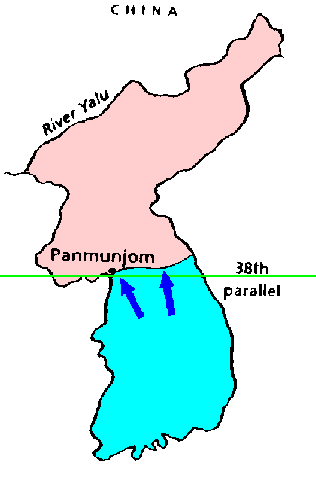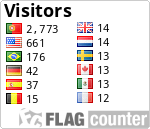 PORTUGUÊS
PORTUGUÊS
Cache sobre o paralelo 38 N (WGS84)
PARALELO 38 NORTE
Os paralelos são linhas de latitude constante, paralelas ao equador (daí o nome…). Como todas as linhas de latitude a sua geometria é definida pelo modo como se estabelece um elipsoide.
No caso das leituras de posição feitas com o sistema GPS é utilizado o elipsoide de referência WGS84, cujas dimensões são 6 378 137,0 m (semieixo maior ou raio equatorial) e 6 356 752,3142 m (semieixo menor ou distância polar).
Esta cache encontra-se sobre o paralelo 38 Norte, usando o sistema de coordenadas geodésicas WGS84. Este paralelo tem um raio de 5 280 820,0 m, pelo que a esta latitude um grau de longitude corresponde a 92 167,707 m, um minuto a 1536,128 m e um segundo a 25,602 m, menos 17,2% que sobre a linha do equador.

Este paralelo teve uma história interessante na península da Coreia ao longo do século XX: foi sugerido como a linha divisória para a península em 1902. O Império Russo tentava controlar a Coreia, enquanto o Japão tinha acabado de assegurar o reconhecimento dos seus direitos sobre a Coreia por parte do Reino Unido. Para evitar um conflito, o Japão propôs à Rússia separar as áreas de influência conforme o paralelo. Porém, nenhum acordo formal foi alcançado, e mais tarde o Japão tomaria o controle total da Coreia de 1910 a 1945.
Depois da rendição do Japão em 1945, o paralelo foi estabelecido como fronteira por Dean Rusk e Charles Bonesteel, do Comité de Coordenação Naval de Guerra dos Estados Unidos em Washington, durante a noite de 10 para 11 de Agosto de 1945, quatro dias antes da libertação completa da Coreia. O paralelo dividiu a península ao meio. Em 1948, a linha divisória tornou-se a fronteira dos recém-criados países Coreia do Sul e Coreia do Norte.
No fim da Guerra da Coreia (1950-1953), uma nova fronteira foi estabelecida através da chamada Zona Desmilitarizada da Coreia, que corta o paralelo 38 num ângulo agudo, de sudoeste para nordeste. O paralelo 38 foi também o local onde o acordo de Panmunjon foi assinado, tendo como único resultado o cessar-fogo, pois um acordo de paz nunca foi assinado.
A CACHE
A cache encontra-se no perímetro sul da cidade de Beja. Agradece-se que o log seja acompanhado de uma fotografia tirada ao GPS’r mostrando as coordenadas. A cache NÃO ESTÁ no caminho de ferro mas junto da estrada. Não convém estacionar mesmo no local da cache: existe perto um local próprio alguns metros a norte, no sentido norte-sul. É PROIBIDO estacionar junto das instalações militares a sul da cache, no sentido sul-norte. Tenham cuidado com os miúdos e a proximidade da estrada, será melhor eles ficarem no carro!


ENGLISH
Cache on the 38 North paralell (WGS 84)
38th NORTH PARALLEL
Parallels are lines connecting all locations (not taking into account elevation) that share a given latitude. As with every circle of latitude their geometry is defined by establishing an ellipsoid. In GPS positioning the WGS84 reference ellipsoid is used. Its dimensions are 6,378,137.0 m (semi-major axis or equatorial radius) and 6,356,752.3142 m (semi-minor axis or polar distance). This cache is placed on the 38th north paralell, using the WGS84 geodesic coordinate system. This circle of latitude has a 5,280,820.0 m radius, so a degree of longitude corresponds to 92,167.707 m, a minute to 1536.128 m and a second to 25.602 m, which is 17.2% lower than over the equator line.

This circle of latitude has an interesting history in the Korean peninsula during the 20th century: It was first suggested as a dividing line the peninsula in 1896. The Russian Empire was attempting to pull Korea under its control, while Japan had just secured recognition of its rights in Korea from the British. In an attempt to prevent any conflict, Japan proposed to Russia that the two sides split Korea into separate spheres of influence along the 38th parallel. However, no formal agreement was ever reached, and Japan later took full control of Korea. After the surrender of Japan in 1945, the parallel was established as the boundary by Dean Rusk and Charles Bonesteel of the US State-War Navy Coordinating Committee in Washington during the night of 10-11 August 1945, four days before the complete liberation of Korea. The parallel divided the peninsula roughly in the middle. In 1948, the dividing line became the boundary between the newly independent countries of North and South Korea.
On 25 June 1950, North Korean forces crossed the parallel and invaded South Korea, sparking the Korean War. After the ceasefire that effectively ended the Korean War in 1953, a new border was established through the middle of the Demilitarized Zone, which cuts across the 38th parallel at an acute angle, from southwest to northeast. The 38th parallel was also the place where the ceasefire was called to end the fighting. No peace agreement was signed.
THE CACHE
The cache is placed just south of Beja. If possible, please upload with your log a photo of you and/or your GPS receiver showing the coordinates. Please do not stop your car in the cache site. It is possible to park in safety a few meters north of the cache, on the north to south direction. Parking near the military facilities, a few meters to the south, IS NOT ALLOWED. The cache IS NOT in the railway but near the road. Watch out for the cars, beware! Take care with your toddlers and kids, better not take them into this cache.
